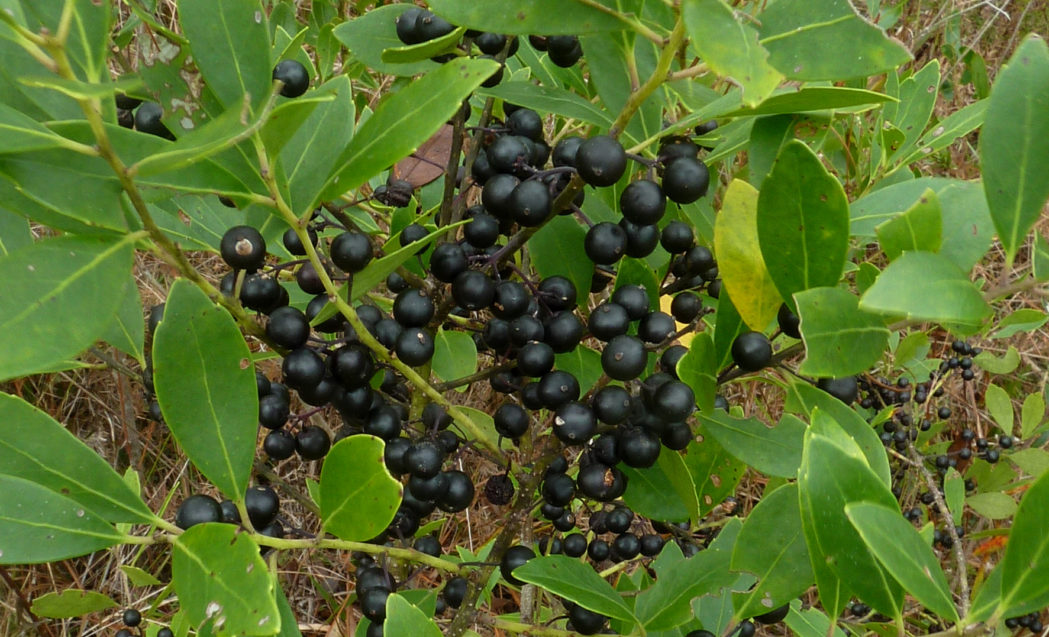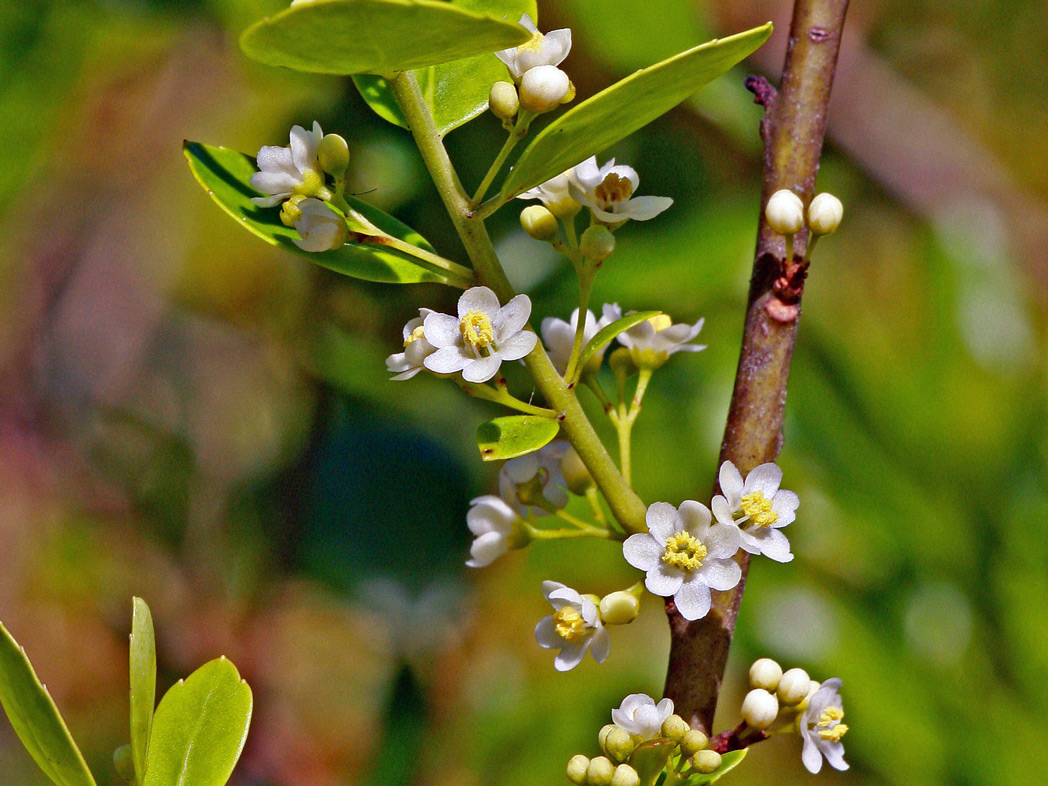Gallberry
Pictured above: Gallberry (Ilex glabra) by Mary Keim. Click on terms for botanical definitions. View post as a PDF.
Gallberry is an evergreen shrub to small tree found in flatwoods, bayheads, coastal swales, bogs, sinks and moist woodlands throughout Florida. Its tiny flowers attract bees, while its pulpy berries and evergreen foliage provide food and cover for birds.
Gallberry’s flowers are greenish-white with four and six rounded petals surrounding a bright green superior ovary. They are born in leaf axils either as single flowers (female) or in cymes (male or female). Leaves are ovate to elliptic, glossy and dark green with pale green undersides. They are alternately arranged. Leaf margins are thick and may be entire, but are typically finely toothed with notched apices. Fruits are shiny black berries containing three to five nutlets.

Native Americans dried, roasted and steeped the leaves to make a black tea, giving the plant another common name: Appalachian tea. (It does not contain caffeine.) Honeybees feed on the flowers and produce a unique honey that is slow to crystallize because of its high pollen and enzyme content.
Ilex is the only living genus in the Aquifoliaceae family.
Family: Aquifoliaceae (Holly family)
Native range: Throughout Florida, excluding the Keys
To see where natural populations of Gallberry have been vouchered, visit florida.plantatlas.usf.edu.
Hardiness: Zones 8A–10B
Lifespan: Perennial
Soil: Moist to dry, acidic, sandy soils
Exposure: Full sun to partial shade
Growth habit: 6–10+’ tall
Propagation: Division, seed
Garden tips: Gallberry is clonal, spreading by underground rhizomes. It can be pruned to a desired shape, making it suitable for a screen or hedge planting. It also works well as a specimen plant or as part of a naturalistic landscape. It can tolerate short periods of drought. The plant sometimes develops leaf spot, especially during the wet season, but it is generally not a problem. Infected leaves may drop early. Gallberry is dioecious, meaning male and female flowers are born on separate plants. Plants of both sexes are required if berries are desired. Seeds may experience a period of dormancy.
Caution: Cultivars have been developed from plants found far north of Florida. These typically do not perform well in our state and will have only one sex.
Gallberry plants are available from nurseries that specialize in Florida native plants. Visit www.PlantRealFlorida.org to find a nursery in your area.
For more information on other Ilex species, see:

